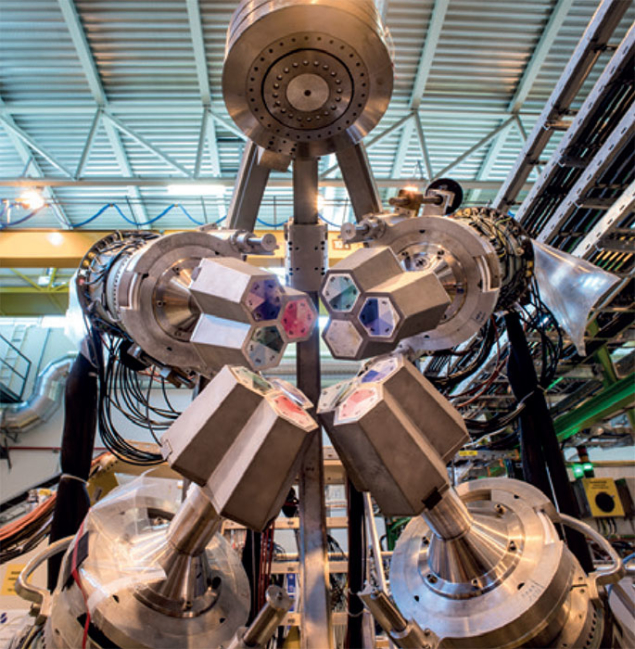
Image credit: J Ordan /CERN.
CERN’s long-running radioactive-ion-beam facility ISOLDE, which produces beams for a wide range of scientific communities, has recently been upgraded to allow higher-energy beams.
In July, the second phase of the High-Intensity and Energy upgrade (HIE-ISOLDE) saw its first user experiments get under way using the high-resolution Miniball germanium detector, which is specially designed for studying nuclear reactions with low-intensity radioactive ion beams. One of the first experiments looked at electromagnetic interactions between selenium-70 and a platinum target, which allow researchers to determine the shape of this radioactive nucleus. It was carried out by a team from the University of the Western Cape in South Africa, marking the first African-led experiment to be carried out at CERN.
Although HIE-ISOLDE’s first physics experiments began in late 2016, earlier this year the facility added a further cryomodule that had to be calibrated, aligned and tested. Each cryomodule contains five superconducting radio-frequency cavities to accelerate the beam to higher energies, and the facility is now able to accelerate nuclei up to an average energy of 7.5 MeV per nucleon, compared with 5.5 MeV last year. The higher energy allows physicists to study the properties of heavier isotopes, and in 2018 a fourth cryomodule will be added to the HIE-ISOLDE linac to reach the final design energy of 10 MeV per nucleon.
The HIE-ISOLDE beams will be available until the end of November, with 13 experiments hoping to use the facility during that time – more than double the number that took data last year.





